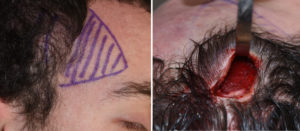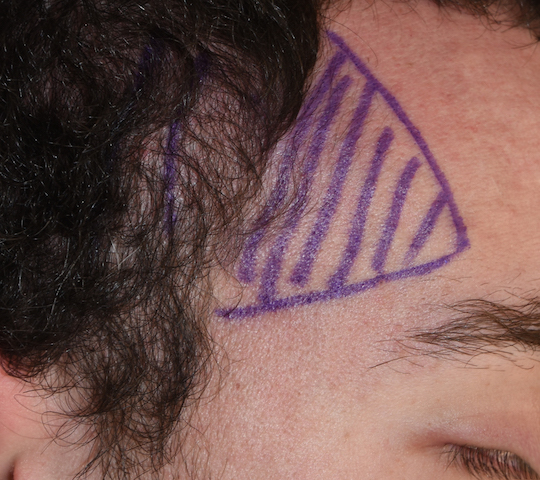The side of the head, also known as the temporal region, is composed of bone and muscle of various proportions. The posterior temporal region (above the ear) is about equally composed of both bone and muscle and is the thinner than than that of the anterior region. Even though it is thinner the posterior temporal muscle is in the range of 7 to 10mms (for men) and contributes more to head width than most think. This serves as the basis for the very effective posterior temporal reduction surgery for excess convexity to the side of the head through a complete myectmmy. Despite total removal of the entire muscle in this temporal region there is no jaw dysfunction from it.
The anterior temporal region is different from the posterior region with a more substantial muscle to bone ratio. From the side of the forehead (anterior temporal line) down to the zygomatic arch the muscle gets thicker and thicker as the temporal fossa gets deeper. While muscle can also be reduced from the anterior temporal zone for excessive non-hair bearing convexity/fullness, there are some very specific differences from that of posterior temporal reduction.

The patient will experience some temporary trismus or mouth opening with anterior temporal reduction as this area is closer to what it is intended to move. (lower jaw) The initial thinning effect will be less apparent than in the posterior temporal region as it relies more on a muscle atrophy effect that takes time to fully appreciate.
The posterior temporal reduction is far more commonly done that the anterior region as most patents wants to reduce the head width above their ears. But for the patient who seeks a more complete width reduction from the side of the eye to behind the ear, an anterior temporal reduction procedure can also be done.
Dr. Barry Eppley
Indianapolis, Indiana



